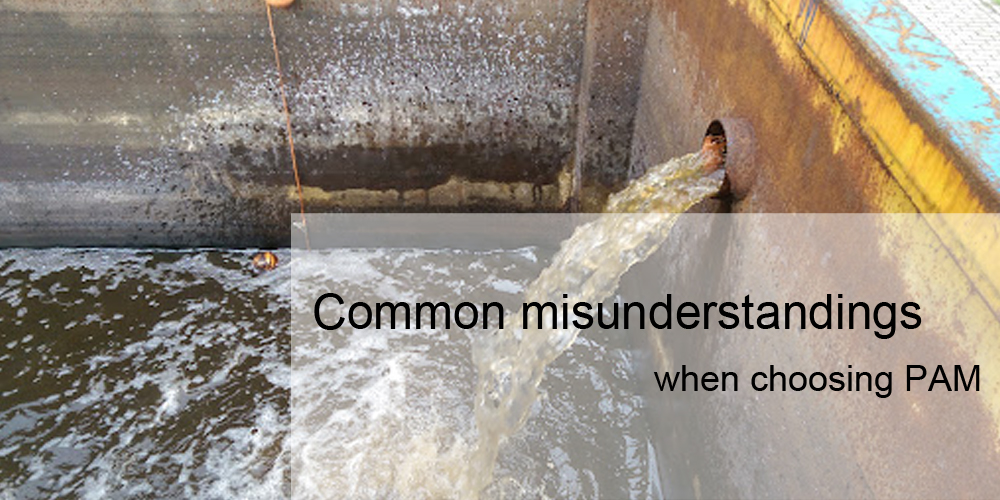Polyacrylamide (PAM), as a commonly used polymer flocculant, is widely used in various sewage treatment scenarios. However, many users have fallen into some misunderstandings during the selection and use process. This article aims to reveal these misunderstandings and give correct understanding and suggestions.
Misunderstanding 1: The larger the molecular weight, the higher the flocculation efficiency.
When choosing polyacrylamide, many people think that the model with larger molecular weight must have higher flocculation efficiency. But in fact, there are hundreds of models of polyacrylamide, which are suitable for different water quality conditions. The nature of wastewater produced by factories in different industries is different. The pH value and specific impurities of different water qualities are significantly different. They may be acidic, alkaline, neutral, or contain oil, organic matter, color, sediment, etc. Therefore, it is difficult for a single type of polyacrylamide to meet all wastewater treatment needs. The correct approach is to first select the model through experiments, and then conduct machine tests to determine the optimal dosage to achieve the most cost-effective effect.
Misunderstanding 2: The higher the configuration concentration, the better
When preparing polyacrylamide solutions, many users believe that the higher the concentration, the better the flocculation properties. However, this view is not correct. In fact, the concentration of PAM configuration should be determined according to the specific sewage and sludge conditions. Generally speaking, PAM solutions with a concentration of 0.1%-0.3% are suitable for flocculation and sedimentation, while the concentration for municipal and industrial sludge dewatering is 0.2%-0.5%. When there are too many impurities in the sewage, the concentration of PAM may need to be increased appropriately. Therefore, the reasonable configuration concentration should be determined through experiments before use to ensure the best use effect.
Misunderstanding 3: The longer the dissolving and stirring time, the better
Polyacrylamide is a white crystalline particle that needs to be fully dissolved to achieve the best effect. Many users think that the longer the dissolving and stirring time is, the better, but in fact this is not the case. If the stirring time is too long, it will cause partial breakage of the PAM molecular chain and affect the flocculation performance. Generally speaking, the dissolving and stirring time should not be less than 30 minutes and should be extended appropriately when the temperature is low in winter. If the dissolution and stirring time is too short, PAM will not be fully dissolved, which will result in the inability to effectively perform rapid flocculation in sewage. Therefore, users should ensure sufficient dissolution and stirring time when using it to ensure the flocculation effect of PAM.
Misunderstanding 4: Ionicity/Ionic degree is the only basis for selection
As one of the important indicators of polyacrylamide, ionicity refers to the negative and positive ionic charge and its charge density. Many people pay too much attention to the ionicity when purchasing, thinking that the higher the better. But in fact, the degree of ionicity is related to the size of the molecular weight. The higher the ionicity, the smaller the molecular weight, and the higher the price. In the selection process, in addition to ionicity, other factors need to be considered, such as specific water quality conditions, requirements for flocculation effect, etc. Therefore, the model cannot be selected based solely on the degree of ionization. Further testing is required to determine the required model.
As a flocculant, polyacrylamide plays an important role in the water treatment industry. When you need to choose the specifications that suit you, please contact me.
Post time: Aug-26-2024


